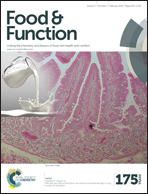Anthraquinones and flavonoids of Cassia tora leaves ameliorate sodium selenite induced cataractogenesis in neonatal rats
Abstract
The present study was undertaken to evaluate the efficacy of Cassia tora leaves, an edible plant traditionally used for eye ailments, in preventing experimental cataractogenesis. Cataract is the leading cause of irreversible visual impairment worldwide characterized by the cloudiness or opacification of the lens due to the disturbance of even distribution of lens proteins and lipids. A significant number of epidemiological studies have suggested the potential role of herbal medicine in the prevention of cataract by maintaining lens architecture. The study was conducted in neonatal rat pups of 8–10 days old with an ethyl acetate fraction of Cassia tora leaves (ECT) administered by gastric intubation. After 30 days, the animals were sacrificed and various parameters such as redox status and gene expressions were evaluated in lenses. ECT administration caused a significant decrease in the onset and maturation of cataract, potentiated antioxidant defense and normalized lens crystallin expression against cataract induced animals. HPLC and ESI-MS analysis of ECT revealed the presence of flavonoids and anthraquinones. Thus, the present study indicates the therapeutic potential of Cassia tora leaves in preventing cataract and the effect is endorsed by the presence of antioxidants in Cassia tora leaves.


 Please wait while we load your content...
Please wait while we load your content...